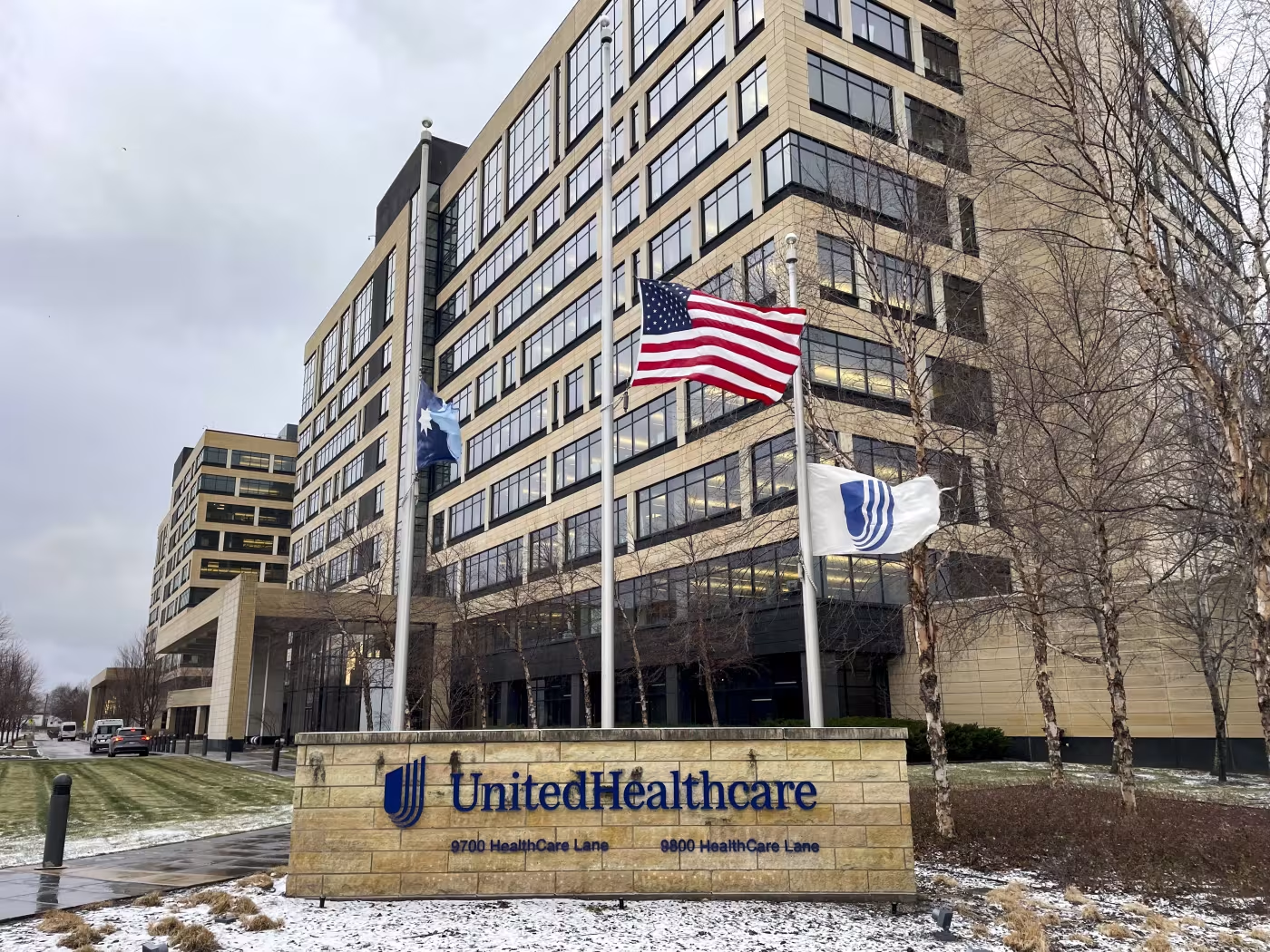Tuesday Report

- In a press release, OPM patted itself on the back for successfully launching the Postal Service Health Benefits Program.
- Govexec adds,
- “The Office of Personnel Management on Tuesday issued guidance to agencies reminding them of how to handle the pay and benefits of political appointees who are set to resign ahead of President-elect Trump’s inauguration on Jan. 20.
- “In a memo to agency human resources directors, OPM associate director for workforce policy and innovation Veronica Hinton wrote that agencies should compensate appointees who are planning on resigning at noon on Inauguration Day—when Trump is slated to be sworn into office—for the hours they are scheduled to work before that time.” * * *
- “Hinton’s memo also addresses the fact that Inauguration Day, which Washington, D.C., area federal workers receive as a holiday due to the congestion resulting from the proceedings, happens to fall on another federal holiday: Martin Luther King, Jr. Day.
- “In short, there are no so-called “in-lieu-of” holidays entitling employees who typically work Mondays to an extra day off in light of the two holidays’ confluence. But if a D.C.-area employee’s normal work schedule does not include Mondays, they would receive one “in-lieu-of” holiday.”
- Speaking of political appointees leaving on Inauguration Day, an HHS press release lets us know “United States Surgeon General Dr. Vivek Murthy released his Parting Prescription for America – PDF, weaving together reflections on his personal and professional experiences having spent six of the last ten years as our nation’s Surgeon General.”
- Fierce Healthcare tells us,
- “The Federal Consumer Financial Protection Bureau on Tuesday issued new regulations barring medical debts from American credit reports, enacting a major new consumer protection just days before President Joe Biden is set to leave office.
- “The rules ban credit agencies from including medical debts on consumers’ credit reports and prohibit lenders from considering medical information in assessing borrowers.
- “These rules, which the federal watchdog agency proposed in June, could be reversed after President-elect Donald Trump takes office Jan. 20. But by finalizing the regulations now, the CFPB effectively dared the incoming Trump administration and its Republican allies in Congress to undue rules that are broadly popular and could help millions of people who are burdened by medical debt.”
- FEHBlog note — The rule does not take effect until early March. The FEHBlog hopes that the incoming Administration will cancel this rule making which is bound to disrupt the U.S. credit market.
- Per a Senate press release,
- Today, Senators Sheldon Whitehouse (D-RI) and Chuck Grassley (R-Iowa), in their respective capacities as Chairman and Ranking Member of the Senate Budget Committee during the 118th Congress, released a bipartisan staff report on the findings of their investigation into the ways in which private equity investment in health care has negative consequences for patients and providers.
- The Committee focused on two private equity firms—including the single-largest private equity investor in health care—that currently or previously invested in two prominent hospital operators. Throughout the course of its investigation, the Committee reviewed more than one million pages of documents from Leonard Green & Partners, Prospect Medical Holdings, Medical Properties Trust, Apollo Global Management (Apollo), Lifepoint Health, and Ottumwa Regional Health Center, a for-profit Iowa hospital, that revealed new information about the business dealings of private equity-owned hospital operators. Documents obtained by the Committee detailed how private equity’s ownership of hospitals earned investors millions, while patients suffered and hospitals experienced health and safety violations, understaffing, reduced quality of patient care, and closures.
- “Private equity has infected our health care system, putting patients, communities, and providers at risk,” said Chairman Whitehouse. “As our investigation revealed, these financial entities are putting their own profits over patients, leading to health and safety violations, chronic understaffing, and hospital closures. Take private equity firm Leonard Green and hospital operator Prospect Medical Holdings: documents we obtained show they spent board meetings discussing profit maximization tactics—cost cutting, increasing patient volume, and managing labor expenses—with little to no discussion of patient outcomes or quality of care at their hospitals. And while Prospect Medical Holdings paid out $645 million in dividends and preferred stock redemption to its investors—$424 million of which went to Leonard Green shareholders—it took out hundreds of millions in loans that it eventually defaulted on. Private equity investors have pocketed millions while driving hospitals into the ground and then selling them off, leaving towns and communities to pick up the pieces.”
- “The Ottumwa community has personally felt the impact of private equity on its health care system. Under private equity ownership, wait times at Ottumwa Regional Health Center have gone up as patient experience has gone down. The diminishing quality of care, service availability and care capacity at the hospital is forcing Ottumwa residents to travel significant distances in order to receive appropriate treatment. Iowans deserve better,” Grassley said. “A dependable health care system is essential to the vitality of a community. As always, sunshine is the best disinfectant. This report is a step toward ensuring accountability, so that hospitals’ financial structures can best serve patients’ medical needs.”
- Read the full report here, and view the documents released by the Committee here and here.
From the public health and medical research front,
- Here is a link to the Centers for Disease and Control and Prevention’s respiratory virus updates.
- STAT News reports
- “At Tufts University in Medford, Mass., researchers loaded a tiny 3D model of the human brain into a plastic shell resting atop a spring-loaded platform. Inside this polymer skull, the donut-shaped ball of living brain tissue floated in a warm, salty bath, its neurons whispering to each other in the darkness. Then a piston struck the platform, whipping it back and forth, and sending the mini-brain sloshing.
- “Days later, as the team assessed the damage, the results were stark. Some of the human brain-like tissue had been housing a latent infection with a herpes virus, the type that causes cold sores. And the impact of the piston — intended to mimic a concussion — had woken that virus up. In those tissues, the researchers found lots of inflammation, newly formed plaques of sticky amyloid proteins, and all around them dying neurons — the signature marks of Alzheimer’s disease. Meanwhile, infection-free brain tissues recovered from the concussion with just a bit of lingering inflammation.
- “Decades of epidemiological data have shown that infections with herpes simplex virus type 1, or HSV-1 can raise the risk of Alzheimer’s disease in certain people. So can a history of head injury. The new research, published Tuesday in Science Signaling, is the first to connect the dots between them, and adds to mounting evidence that this most common form of dementia can be caused by an everyday microbe.”
- Per Fierce Pharma,
- “It’s now official: Johnson & Johnson’s combination of Rybrevant and Lazcluze has racked up an overall survival (OS) victory against AstraZeneca’s standard-of-care Tagrisso as a first-line treatment for advanced or metastatic non-small cell lung cancer (NSCLC).
- “In reporting positive top-line results from the phase 3 MARIPOSA study in 1,074 patients with NSCLC with EGFR exon 19 deletions or L858R substitution mutations, J&J’s combo is expected to keep patients alive for at least a year longer than Tagrisso.
- “The results, details of which are yet to be revealed, show a statistically significant and clinically meaningful improvement in OS, according to J&J.”
- BioPharma Dive points out,
- “A landmark study hoping to find new treatments for ALS has notched two more failures, as experimental medicines from Denali Therapeutics and Calico Life Sciences proved no better than a placebo at slowing the nerve-destroying disease or keeping patients alive longer.
- “Denali disclosed high-level results from the study Monday. After about six months, treatment with the company’s drug didn’t result in any significant changes in the severity of the disease, nor did it substantially help patients’ muscle strength or respiratory function.
- “Denali plans to further examine the data and look at biological markers of the disease, including one, “neurofilament light chain,” that’s become increasingly important to researchers focused on amyotrophic lateral sclerosis. The company expects to conduct those analyses later this year.”
- and
- “Privately-held biotechnology startup Metsera said Tuesday a long-acting GLP-1 shot it’s developing helped people who are overweight or have obesity lose more weight than placebo recipients in a Phase 2 trial.
- “Study participants who received the shot, dubbed MET-097i, lost on average 11% more of their body weight than those who got a placebo over the course of 12 weeks. Placebo-adjusted weight loss also reached around 20% in those who received the highest dose, comparable to what was observed in tests of Eli Lilly’s Zepbound and Novo Nordisk’s Wegovy over a similar period.
- “Metsera also said data from the trial support plans to test MET-097i as a monthly injection, less frequent than the weekly shots Zepbound and Wegovy require. The announcement is the latest step forward for a company that has raised more than half a billion dollars since launching last April to support a bid to challenge Lilly and Novo’s medicines.”
- Cardiovascular Business adds,
- “Semaglutide is associated with significant cardiovascular benefits for overweight and obese patients who have previously undergone coronary artery bypass graft (CABG) surgery, according to new data published in the Journal of the American College of Cardiology.
- “Semaglutide is a popular GLP-1 receptor agonist being sold by Novo Nordisk under the brand names Wegovy and Ozempic. GLP-1 receptor agonists were originally developed to treat diabetes, but they are being used more and more to help obese and overweight patients lose weight.
- “For this latest analysis, researchers tracked data from the SELECT trial, originally designed to examine semaglutide’s impact among overweight/obese patients without diabetes, and focused exclusively on more than 2,000 patients with a prior history of CABG. The patients had a mean age of 65 years old, 84.2% were men and the mean BMI was 31.9 kg/m2. A history of hypertension was seen in 85.6% of patients. The rates of pre-existing atrial fibrillation and heart failure were 12.5% and 33.4%, respectively.
- ‘The study’s results confirmed that CABG patients still face an elevated risk of ischemic cardiovascular events following treatment. And once again, researchers wrote, semaglutide has been linked to “significant and consistent reductions” in the risk of such events.”
- The Wall Street Journal reports,
- “A new study is helping to answer a pressing nutrition question: Which ultra-processed foods are harming our health—and which might not be so bad?
- “The problem is the way many packaged foods are made, researchers believe. Products such as many frozen pizzas, cereals and chips pack more calories per gram than less-processed foods do. And most ultra-processed foods have combinations of salt, fat, sugar and carbohydrates that aren’t generally found in nature, which can make us crave them. Diets high in packaged foods without those traits—such as canned peaches or refried beans—don’t seem to lead people to overeat and gain weight, at least not as much.
- “Those are the findings so far of a continuing study investigating how ultra-processed food affects our bodies. Scientists presented their interim data at a workshop put on by the National Institutes of Health and the U.S. Food and Drug Administration in December.
- “There might be a way to create the quote, unquote healthy ultra-processed food that’s still convenient,” said Kevin D. Hall, the principal investigator of the study and a scientist at the NIH, giving an example of a frozen meal with brown rice, beans and a lot of vegetables.”
From the U.S. healthcare business front,
- STAT News reports,
- “The advent of the first generic GLP-1 drugs could help Medicare negotiate a lower price for the highly sought after diabetes and obesity medication semaglutide, according to experts familiar with the price-negotiation program and STAT’s review of documents from the first round of negotiations.
- “The Food and Drug Administration approved generics for the diabetes drugs exenatide and liraglutide in November and December. While those drugs don’t work as well as semaglutide, their much lower costs could give Medicare leverage to push for lower prices for semaglutide, two experts said.
- “It’s hard to make an argument that liraglutide is not clinically comparable to the other GLP-1,” said Institute for Clinical and Economic Review President Sarah Emond.
- “Both the nonpartisan Congressional Budget Office and academic experts expect semaglutide, sold by Novo Nordisk under the brand names Ozempic and Wegovy, to be among the next 15 drugs up for price negotiation. Medicare will announce that list by Feb. 1, and the negotiated prices will take effect in 2027.”
- Fierce Pharma notes,
- “With COVID vaccine sales in the doldrums and a respiratory syncytial virus (RSV) vaccine market in “contraction”, Moderna CEO Stéphane Bancel had the unenviable task of trying to put a positive spin on a sharp stock decline in his annual shareholder letter.
- “After an unexpectedly limited RSV vaccination recommendation from the CDC resulted in a “contraction” in the U.S. market, Moderna will adjust its financial reporting traditions to exclude products in their launch year, Bancel said Monday in his annual letter to shareholders.
- “The company was “too optimistic about our ability to break into the market given the headwinds from a midyear approval and launch,” the Moderna CEO wrote about the RSV launch. “We are taking those learnings to heart and going forward, we will not include revenue from products in their launch year in our financial framework,“ he added.”
- Per MedTech Dive,
- “Stryker has agreed to acquire Inari Medical for approximately $4.9 billion, the company announced late Monday. The transaction is expected to close in the first quarter.
- “Under the deal, Stryker would acquire all of Inari’s shares for $80 per share in cash, a premium of more than $30 over Friday’s closing price. Inari’s stock price closed at $65 Monday after surging by more than 30% in day trading.
- “Inari would continue a busy year of dealmaking for Stryker in 2024, which included acquisitions of the artificial intelligence company Care.ai, the back pain device maker Vertos Medical and Nico Corporation, which makes devices to remove brain tumors and clots. Stryker did not disclose financial terms for the three deals.”
- The Drug Channels Blog headlines “Inflation-Adjusted U.S. Brand-Name Drug Prices Fell for the Seventh Consecutive Year as a New Era of Drug Pricing Dawns.” Check it out.
- Health Day relates,
- “Patients have more access to their own medical test results than ever before, thanks to legislation requiring results be released as soon as they’re available.
- “But that’s not necessarily a good thing, a new study warns.
- “Many patients are reading test results in their electronic medical record before their doctor has had a chance to go over them, researchers say in a study published Jan. 2 in the Journal of the American Medical Association.
- “This is provoking a lot of confusion and anxiety, mainly because medical reports contain a lot of jargon the average patient doesn’t understand, researchers said.
- “For example, “a standard pathology report is written by a pathologist for a clinical specialist like a surgeon or a cancer doctor or for other pathologists to read,” lead researcher Dr. Cathryn Lapedis, a pathologist at University of Michigan Health, said in a news release from the college.
- “To address this, Lapedis and her colleagues tested whether patients might benefit from pathology reports written in a way they would better understand.”








